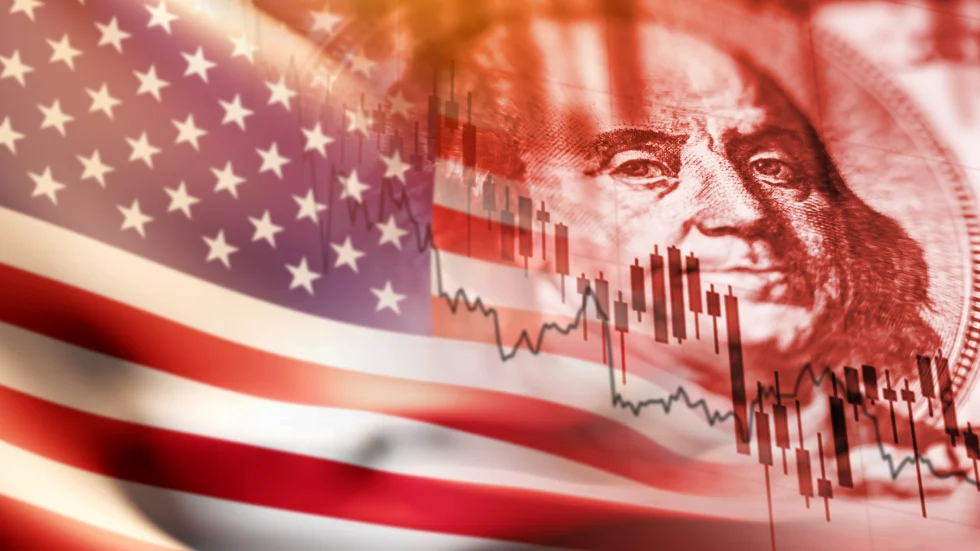The United States economy appears to be precariously perched on the brink of recession. The stock market’s recent plunge reflects heightened recession fears, further exacerbated by a bleak jobs report. On August 2, the US Bureau of Labor Statistics revealed that non-farm employment rose by a mere 114,000 in July. This marks the lowest increase since December 2020, and far below the anticipated 175,000.
Concurrently, the unemployment rate edged up to 4.3%, the highest since October 2021, surpassing the expected 4.1%. These disappointing figures triggered a rush into government bonds, driving benchmark yields below 4%. After the data release, US President Joe Biden acknowledged the mixed signals: While inflation shows signs of easing, job growth is evidently slowing. This dual challenge paints a complex picture for policymakers juggling between fostering employment and curbing inflation.
The market’s reaction to the jobs data highlights the precarious balance that the US economy must maintain. As investors seek refuge in safer assets, the broader implications for growth and stability remain a pressing concern. The road ahead for the country’s economy is fraught with uncertainty, with market dynamics reflecting the underlying anxieties of a potential recession.
Tanking US tech stocks raise economic concern
Similarly, US stocks took a nosedive the next day, on August 3. They closed sharply lower after a weak July jobs report stoked fears about the softening economy. Technology stocks were hit particularly hard as they reeled from disappointing earnings reports. The Nasdaq Composite market index tumbled 2.4% and the S&P 500 fell 1.8%, while the Dow Jones Industrial Average slid 1.5%.
Each major index ended the week on a sour note. The Dow’s four-week winning streak came to an abrupt halt. Both the Nasdaq and S&P 500 marked their third consecutive weekly declines. Notably, the Nasdaq has slipped into technical correction territory, and now sits 10% below its July 10 record close.
The weak jobs report underscored the precarious state of the economy. It exhibited a picture of uncertainty, with employment gains failing to meet expectations. This dismal news, coupled with underwhelming earnings from tech giants, cast a shadow over the markets. Investors are left grappling with the dual challenges of a faltering labor market and lackluster corporate performance.
As the summer heat blazes on, so do concerns about the future trajectory of the US economy. The recent downturn in the stock market serves as a stark reminder of the volatility that lies ahead.
The Sahm Rule warns of an imminent recession
The July non-farm data from the US has intensified concerns about the employment landscape, raising the specter of a looming recession. With the release of this data, the unemployment rate has surged by 0.6% from its low point earlier this year.
This rise triggers the Sahm Rule, a principle introduced in 2019 by former Federal Reserve economist Claudia Sahm. According to the rule, when the three-month moving average of the unemployment rate increases by 0.5% or more from its lowest point in the previous 12 months, the US economy practically enters a recession.
The rule serves as an early warning system for the US government. It signals when a recession is imminent and enables timely policy interventions to support households through economic downturns. Its accuracy and reliability have made it a cornerstone in economic forecasting.
As the unemployment rate climbs, the pressing question becomes how the government will respond to cushion the blow for American families. The current data denotes the urgent need for strategic measures to mitigate the impact of a potential recession.
The latest US non-farm employment report has sparked two significant market concerns: fears of an impending recession and anxiety over a potential Federal Reserve policy misstep. Analysts now worry that the economy may be weaker than the central bankers at the Federal Reserve had anticipated. This could compel the Federal Reserve to make a sharp cut in borrowing costs in September, or even resort to an emergency rate cut beforehand to stimulate demand.
The sharp slowdown in payrolls in July and a more pronounced rise in the unemployment rate have made a September interest rate cut seem inevitable. This situation has increased speculation that the Federal Reserve might commence its loosening cycle with a significant 50 basis point cut, or an even more drastic intra-meeting move. With the economy seemingly teetering on the brink of recession, market expectations for Federal Reserve rate cuts are intensifying. Traders are now betting that the Federal Reserve will reduce rates by 50 basis points next month.
Rate cuts are a double-edged sword
Furthermore, the outlook for 2024 has shifted dramatically. Bets on total rate cuts for the year have reached 111 basis points. This growing speculation underscores the precarious balance the Federal Reserve must maintain.
The market’s trajectory hinges not only on economic data but also on how investors interpret potential interest rate cuts. These cuts are typically designed to stimulate economic activity, encouraging businesses to expand and consumers to spend. However, they can also indicate underlying concerns about the economy’s health.
The delicate balance the Federal Reserve must maintain becomes evident in times like these. On one hand, cutting rates can provide much-needed relief to a slowing economy, fostering growth and stability. On the other hand, such measures might be perceived as a red flag. They could indicate that the Federal Reserve is apprehensive about the economy’s robustness. Investors are acutely aware of this duality.
When the Federal Reserve signals a rate cut, the immediate reaction can be a mix of optimism and caution. The optimism stems from the potential boost to economic activity, while the caution arises from the implicit admission that the economy might be faltering. As the market digests these signals, the broader implications for economic growth and stability remain a pressing concern.
The Federal Reserve’s actions are under intense scrutiny, with every move potentially influencing market sentiment. The interplay between rate cuts and market perception reflects the complex dynamics at play, shaping the future trajectory of the US economy.
[Lee Thompson-Kolar edited this piece.]
The views expressed in this article are the author’s own and do not necessarily reflect Fair Observer’s editorial policy.
Support Fair Observer
We rely on your support for our independence, diversity and quality.
For more than 10 years, Fair Observer has been free, fair and independent. No billionaire owns us, no advertisers control us. We are a reader-supported nonprofit. Unlike many other publications, we keep our content free for readers regardless of where they live or whether they can afford to pay. We have no paywalls and no ads.
In the post-truth era of fake news, echo chambers and filter bubbles, we publish a plurality of perspectives from around the world. Anyone can publish with us, but everyone goes through a rigorous editorial process. So, you get fact-checked, well-reasoned content instead of noise.
We publish 2,500+ voices from 90+ countries. We also conduct education and training programs
on subjects ranging from digital media and journalism to writing and critical thinking. This
doesn’t come cheap. Servers, editors, trainers and web developers cost
money.
Please consider supporting us on a regular basis as a recurring donor or a
sustaining member.
Will you support FO’s journalism?
We rely on your support for our independence, diversity and quality.







Comment